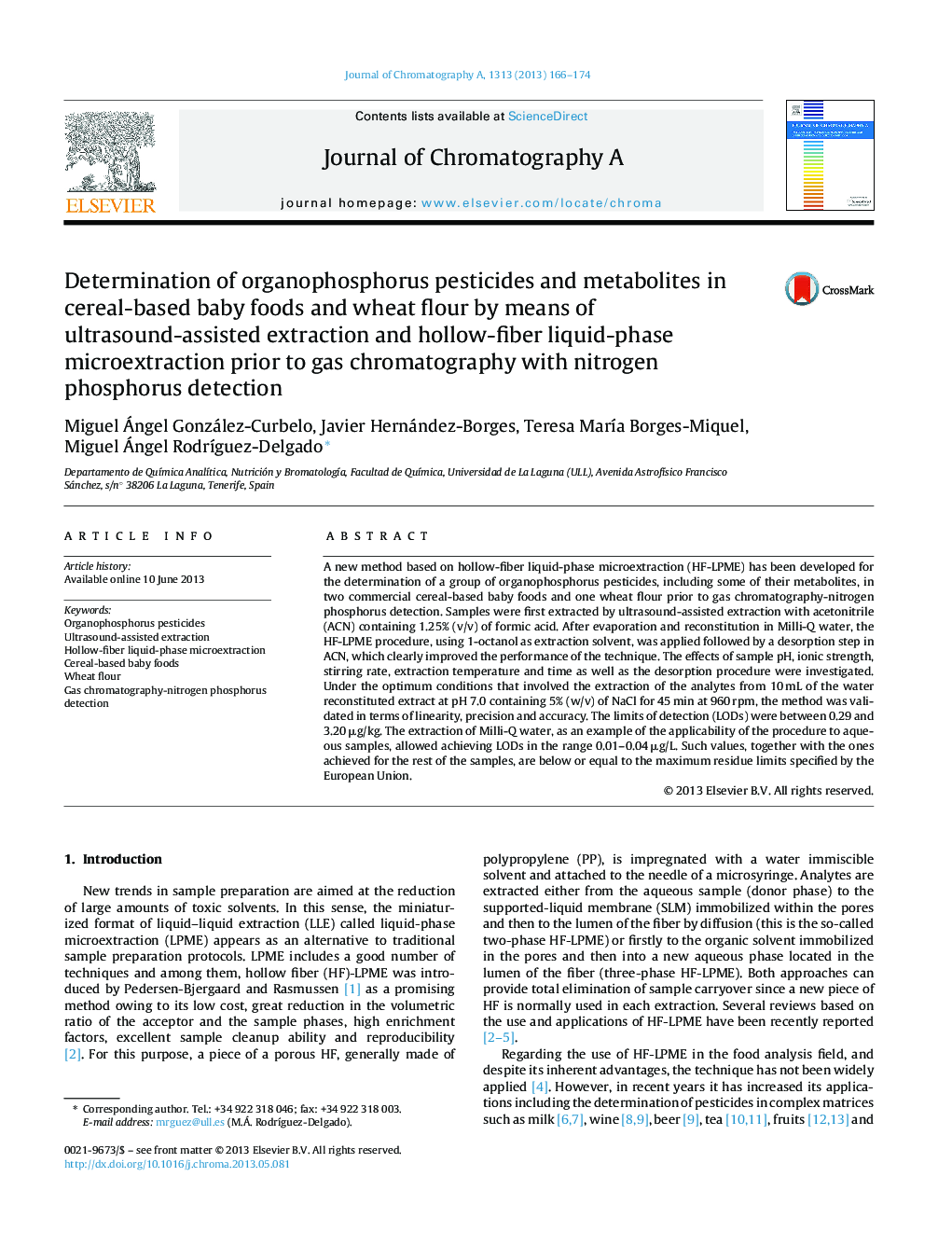| کد مقاله | کد نشریه | سال انتشار | مقاله انگلیسی | نسخه تمام متن |
|---|---|---|---|---|
| 1203413 | 1493613 | 2013 | 9 صفحه PDF | دانلود رایگان |

• A UAE-HF-LPME–GC-NPD method was developed for pesticide extraction.
• Main parameters affecting the extraction efficiency were investigated.
• The method shows good sensitivity, linearity, precision and accuracy.
• LOQs are below or equal to the strict MRLs specified by the European Union.
A new method based on hollow-fiber liquid-phase microextraction (HF-LPME) has been developed for the determination of a group of organophosphorus pesticides, including some of their metabolites, in two commercial cereal-based baby foods and one wheat flour prior to gas chromatography-nitrogen phosphorus detection. Samples were first extracted by ultrasound-assisted extraction with acetonitrile (ACN) containing 1.25% (v/v) of formic acid. After evaporation and reconstitution in Milli-Q water, the HF-LPME procedure, using 1-octanol as extraction solvent, was applied followed by a desorption step in ACN, which clearly improved the performance of the technique. The effects of sample pH, ionic strength, stirring rate, extraction temperature and time as well as the desorption procedure were investigated. Under the optimum conditions that involved the extraction of the analytes from 10 mL of the water reconstituted extract at pH 7.0 containing 5% (w/v) of NaCl for 45 min at 960 rpm, the method was validated in terms of linearity, precision and accuracy. The limits of detection (LODs) were between 0.29 and 3.20 μg/kg. The extraction of Milli-Q water, as an example of the applicability of the procedure to aqueous samples, allowed achieving LODs in the range 0.01–0.04 μg/L. Such values, together with the ones achieved for the rest of the samples, are below or equal to the maximum residue limits specified by the European Union.
Journal: Journal of Chromatography A - Volume 1313, 25 October 2013, Pages 166–174